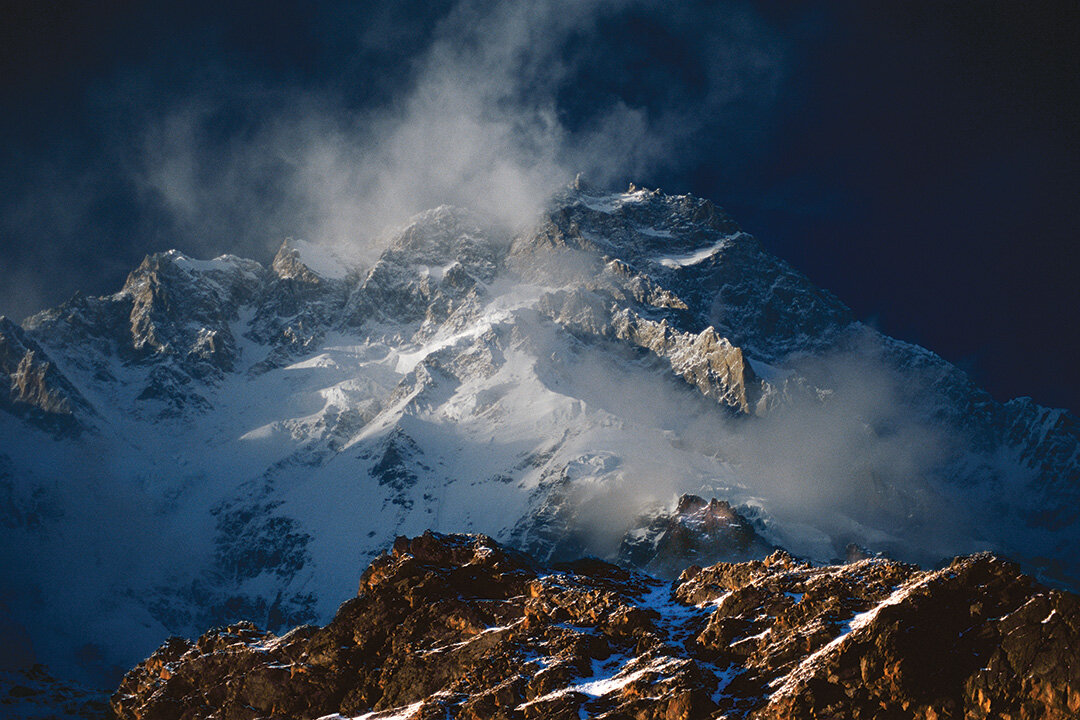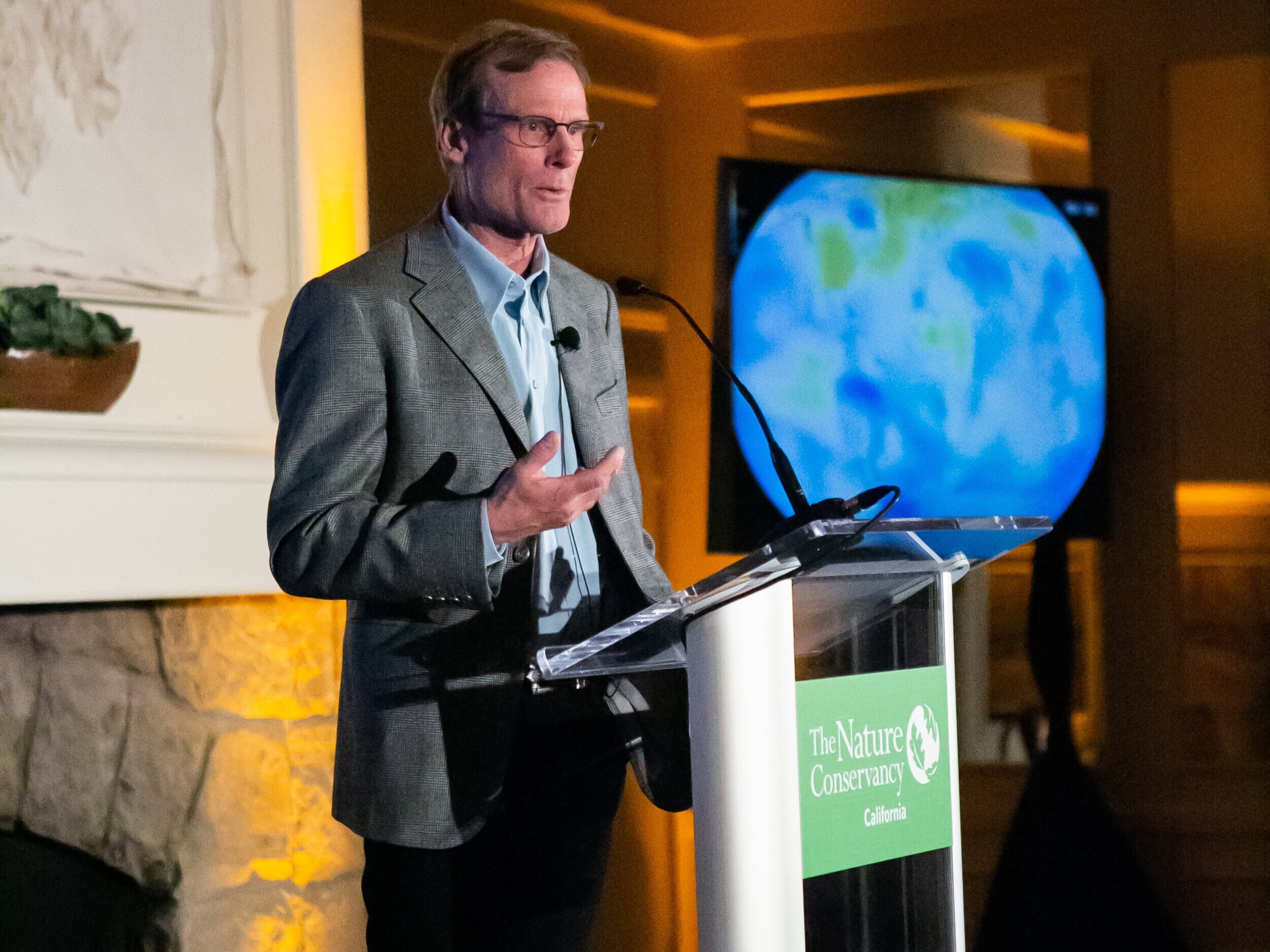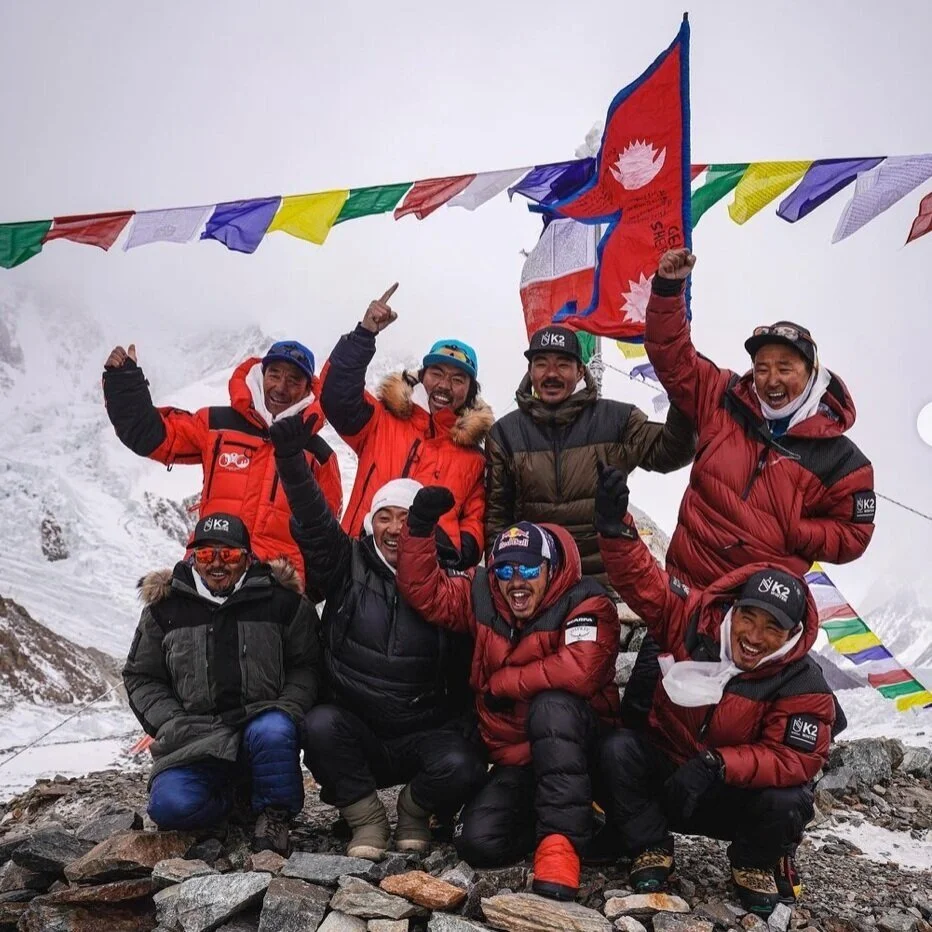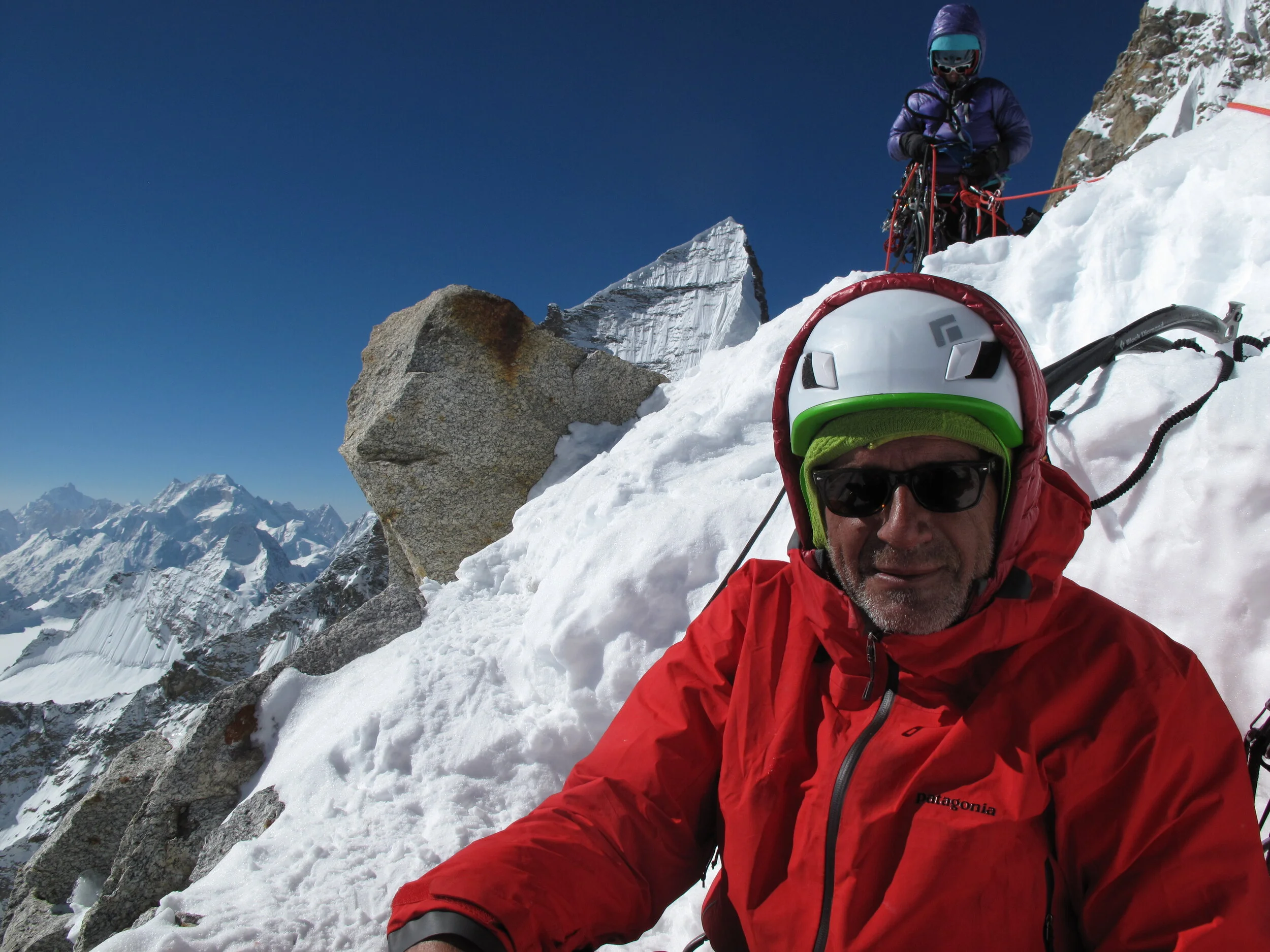BOOK | Winter 8000: Climbing the World’s Highest Mountains in the Coldest Season
/REVIEW
“The only thing we truly want is to have a dream so strong it lets us feel young and alive… That it’s never too late for dreams, and no dream is so big and so beckoning or so icy it’s impossible.” —Simone Moro, Winter 8000
Bone-chilling cold and wild winds wrap the upper reaches of the 8000-meter peak Nanga Parbat during the winter 2006-7 attempt by an all-Polish team. Photo: Tommy Heinrich
Review and Interview by Jack Tackle
Bernadette McDonald’s latest book, Winter 8000, chronicles one of the most compelling mountaineering stories of struggle, loss and triumph of the human spirit in modern times. The book is a captivating historical narrative of the insanely grueling quest of climbing 8000-meter peaks in winter, and it is timely: This winter ten Nepalis summited K2—the last of the 8000-meter peaks to be scaled in the coldest season. Sadly, five climbers on other teams at K2 this season died while making the attempt.
In the 1980s after numerous expeditions to Alaska, China, and the Karakoram of Pakistan, I became enthralled with the idea of climbing hard winter routes in the Tetons of Wyoming. Alex Lowe and I shared the vision of using first ascents of the ice-laden faces on the Grand Teton and Mount Moran as our training ground. There we developed the skills and experience needed in the greater ranges of Alaska, Patagonia, and the Himalayas.
As a veteran of 35 expeditions to Alaska and 17 first ascents of technical alpine faces there, I am often asked, why I have never attempted first winter ascents in Alaska too. My answer: It’s ALWAYS winter on Denali! Cold, dark, miserable.
Jet stream winds and searing Arctic cold of negative 40 degrees F are common Denali even during the regular climbing season, and its latitude at three degrees south of the Arctic Circle, accounts for a lot of that weather. The same goes for most of the other 5000-meter peaks in the Alaska and the Logan-St Elias ranges.
Polish climbers Krzysztof Wielicki (left) and Leszek Cichy celebrating the first winter ascent of an 8000-meter peak at Everest base camp in February 1980. Considered the greatest challenge in alpinism, it took 40 years for all 14 8000-meter peaks to be climbed in winter. Photo: Bogdan Jankowski
Understanding in no uncertain terms what it means to be cold, it is astounding to imagine taking that concept and applying it to all fourteen 8000-meter peaks in the Himalaya! Many of us are familiar with the now common practice of climbing the Seven Summits—the highest peaks on all seven continents. As of this writing, 43 people have climbed all 14 of the 8000-meter peaks. An even shorter and far more elite list of people have concentrated on climbing 8000-meter peaks in the unforgiving conditions found in winter, many of them Poles.
From the beginning of the book, I was enthralled with McDonald’s relationship with the Poles and Andrzej Zawada, the champion and leader of the Ice Warriors, an elite group of hardened Polish mountaineers who comprised most of the winter expeditions to 8000-meter peaks in the 1980s.
Each 8000-meter peak appears in its own chapter as a novella in which McDonald interweaves the personalities and motivations of complex individuals who cast themselves full force into the harshest arena of winter mountaineering. The initial seven 8000-meter peaks climbed in winter were all by Polish expeditions and summiteers. Ironically, Everest was the first winter summit and in January of 2021, K2 was the last winter ascent, climbed by ten spirited Nepalis.
The dominance of the Poles and their obsession with these audacious objectives are alone worth the read. None of these real-life characters are household names in the West, and many seasoned alpinists were not familiar with nor understood what they achieved until very recently.
“The constant hurricane force of the jet stream winds scour the higher elevations of the Himalaya, sounding like jumbo jetliners with their relentless, intimidating and ominous roar. These gales destroy tents and hurl climbers off their feet like rag dolls in a wind tunnel.”
Winter 8000 also drives home the appreciation that the technical aspects of the climbing and the altitude are not the greatest obstacles to success: The greatest hindrances are cold, darkness, and most notably, the WIND! The constant hurricane force of the jet stream winds scours the higher elevations of the Himalaya, sounding like jumbo jetliners with their relentless, intimidating, and ominous roar. These gales destroy tents and hurl climbers off their feet like rag dolls in a wind tunnel.
The penultimate challenge is the waiting, sometimes for weeks, at base camp. Managing the passage of time is largely a mental game of chess. When the dissipating clouds indicate stable high pressure, the ability to reinvigorate the mind and body is ultimately more inspiring than the primary goal to summit. Perpetually recommitting yourself in the world’s harshest environment, the third Pole, as it is referred to by those who know its bounds, is the definitive test.
Italian climber Simone Moro celebrates on the summit of Makalu in February 2009 when he and Russian Denis Urubko made the first winter ascent of the mountain. Photo: Denis Urubko
McDonald has written two other remarkable books about Polish climbing. Freedom Climbers, which chronicles the golden age of Polish mountaineering from 1971-1992, and The Art of Freedom, a biography of one of the world’s greatest alpinists, Voytek Kurtyka. Two of these books won the prestigious Boardman Tasker Award for mountaineering literature in 2011 and again in 2017. The “art of suffering” is referenced numerous times and is the title of McDonald’s introduction to Winter 8000. It is indeed an applicable and poignant descriptor of the expertise these men and women must master in order to achieve, persevere, and survive in this pursuit of climbing the world’s highest mountains during the most desolate and coldest time of year.
In the midst of our current world crisis and the pandemic, with all the disruption to daily life and the fear it invokes, this book gives us a focused perspective, from a climber’s point of view, of who chooses to suffer and overcome adversity in the face of peril and possible death. Simone Moro is quoted in the chapter on Broad Peak, and his words perhaps best convey the motivation of this select group of men and women who choose to climb in the world’s harshest environment:
“Nobody wants to die for their dreams. The only thing we truly want is to have a dream so strong it lets us feel young and alive. Majeic [Berbeka] taught me this well. That it’s never too late for dreams, and no dream is so big and so beckoning or so icy it’s impossible.”
In January 2021 a team of ten Nepalese—nine Sherpas and a Ghurka—claimed the final winter ascent of an 8000 meter peak: K2. Photo: Nirmal Purja (Instagram)
INTERVIEW WITH THE AUTHOR
Bernadette McDonald, author of Winter 8000, in 2017 when she presented at the Bilbao Mendi Film Festival. Photo: Rebecca Martin
Jack Tackle: K2, which was the last remaining 8000-meter peak to be climbed in winter, was finally climbed by a team of ten Sherpas this January. What do you think the future will be for 8000-meter winter ascents in the Himalayas?
Bernadette McDonald: It was actually ten Nepalis, which included nine Sherpas and a Gurkha. I think the next chapter will actually be similar to the chapter that Italian Simone Moro opened a while back on Makalu. When he and Russian Denis Urubko did an oxygen-free, alpine style, winter ascent of Makalu, that signaled the future. That doesn't mean that all winter expeditions to the 8000ers are going to look like this, but I do think it's the future of really interesting winter climbing in the high mountains. And of course, more technical routes. Some people talk about solo. But I think if you analyze what really happens with solo winter climbs, there is usually a support structure, even if it's just one person. That goes for Krzysztof Wielicki’s winter ascent of Lhotse too: not exactly 'solo', just 'alone'.
“Thanks to Andrzej Zawada, who was an intelligent, well read, very aware, charismatic and ambitious climber—who was also a leader—Polish climbers created their own chapter in the history of Himalayan climbing. That chapter was winter.”
Andrzej Zawada was the charismatic leader of the Polish climbers dubbed “Ice Warriors,” who were first to pursue winter ascents of 8000 meter peaks. Here Zawada leads the Lhotse winter expedition in 1974. Photo: Bogdan Jankowski
JT: The communist era in Eastern Europe clearly fostered and supported Himalayan expeditions in countries like Poland. In your opinion, if the Soviet Bloc had not been in place in the '60s, '70s, and '80s, how much of the Polish mountaineering emphasis on climbing 8000-meter peaks in winter would have taken place?
BM: I think it would have been entirely different. If Poland had been a free country after the war, and if Polish climbers had been free to travel, they most certainly would have been part of the history of the first ascents of the 8000ers. Polish climbers were very accomplished, and there were lots of them. But of course, they couldn't travel. Thanks to Andrzej Zawada, who was intelligent, well read, very aware, charismatic, and ambitious climber—who was also a leader—Polish climbers created their own chapter in the history of Himalayan climbing. That chapter was winter. It was a strategic move on Zawada's part, and Polish climbers were just so keen and so comfortable with winter climbing, that they jumped at the chance to go. The rest, as they say, is history.
JT: In Winter 8000 you touch on the 16-year gap between winter ascents of Lhotse in 1988 and Shishapangma in 2005. Can you expand on why you think it took so long for another winter ascent of an 8000-meter peak after 1988?
BM: I think a huge part of the gap [between winter climbs] has to do with the mortality rate of Polish Himalayan climbers. If you review the history of Himalayan climbing during that time, a lot of the top Polish climbers died in the mountains. Remember—they were the leaders in this game, and when there weren't enough of them left to do the job or mobilize younger Polish climbers to do the job, the job didn't get done. The other reason has to do with the changing economic situation in Poland. All of a sudden people—including climbers—could get real jobs with real salaries, and with real career paths. They were less inclined to spend their entire winters at the base of Manaslu or Makalu.
JT: Do you agree with Italian climber Simone Moro's opinion and criteria that a true winter ascent only counts when the expedition takes place from Dec 21st to March 21st? If so, how do you define in modern terms, the phenomenal effort by Wielicki solo-summiting Lhotse on Dec 31st, 1988 but with the expedition reaching base camp initially in November?
BM: I think in a general sense he is right. But I think he gets a bit obsessive about 'arriving' at the mountain no earlier than December 21st. He has at times acclimatized on another Himalayan peak so that when he arrives in base camp, he's ready to go. I don't think that is more noble than arriving in base camp before December 21st. It's absolutely true that Krzysztof arrived at Lhotse base camp before December 21st, as a number of the K2 climbers did this year as well. I think it's fair to say that the actual climbing on the peak of choice should start after December 21st. I think it's also fair to say that historical perspective should be part of the equation. And that isn't just pertaining to the dates of the start and endpoints of the climbs. I think you have to judge the earlier climbs with a different lens than modern climbs. So much has changed: weather forecasts, helicopter rescues, equipment, finances, climbing skills. It all adds up.
JT: Simone Moro has climbed four 8000-meter summits in winter and now K2 has been climbed. I just read the epic account of his crevasse fall on Gasherbrum I with Tamara Lunger! Do you think his future plans will involve winter Himalayan climbing?
BM: He's on Manaslu at the moment with Basque climber Alex Txikon. Manaslu was climbed long ago by the Poles, without supplemental oxygen. I'm not sure exactly why Simone chose Manaslu this year, but he has tried it twice before, and I think he probably wanted to be anywhere but K2 this winter. As for the future, it wouldn't surprise me to see him on K2 or Everest, going for an oxygen-free ascent.
JT: This winter there were several guided trips on K2 among those attempting to make the first winter ascent of the mountain. How has the presence of commercial trips changed the goals and style of winter Himalayan 8000-meter peak ascents?
BM: This year was not normal. I think that now that the last 8000er has been climbed in winter, the attraction to paying clients will fade. It's not an appropriate commercial sport, in my opinion. I don't think these clients will change the goals and style of winter climbing in the high mountains that much because I just don't think the market will be there for it in the future. I suspect these clients will go back to a gentler season.
French alpinist Élisabeth Revol on her winter attempt of Nanga Parbat in 2013-14 with Italian climber Daniele Nardi. Photo: ÉlIsabeth Revol Archive
JT: Who do you see as the vanguard of lightweight alpine-style or solo ascents of 8000-meter peaks in the winter in the future?
BM: I think solo is unlikely, as I noted. Alone—maybe. But solo—unlikely. As for the lightweight style, I would point towards Simone Moro, Alex Txikon, Denis Urubko, and Adam Bielecki. There are others, but these four are solid. On the female side, I would look to Elisabeth Revol and Tamara Lunger.
JT: You knew many of the climbers whom you write about in the book. Some of them are still alive, but many lost their lives in their pursuits as “Ice Warriors,” who were willing to engage in the art of suffering. Was this the most difficult part for you in writing this book?
BM: Without question, it was Maciej Berbeka. You're right—I did know or do know, a lot of them. But I knew Maciej, his family, his friends, and his partners on the climb. I saw what his death did to them. They were all destroyed, to a certain extent. And he was such a lovely man.
JT: What is the one question you haven’t been asked in interviews around the launch of Winter 8000 that you feel is an important topic?
Icy alpenglow illuminates the daunting features of Nanga Parbat. Referred to by climbers as the “killer mountain,” the peak demanded 31 attempts before a winter ascent was achieved in 2016 by the international team of Simone Moro, Muhammad Ali Sadpara, and Alex Txikon. Photo: Tommy Heinrich
BM: The question that has only been asked of me once, and which I have a heck of a time answering, is whether I think what climbers have been doing in their winter pursuits of the 8000ers is worth it. Obviously, they think it's worth it or they wouldn't do it. I am really puzzled by the question and am all over the map with my thoughts on the answer. For some—many, actually—I think it is worth it. An admirable objective that is full of challenge, requiring tactics, skills, perseverance, focus, and the ability to suffer. For some, it clearly isn't worth it, whether it's frostbite or injury, or death. And in those cases, in particular, I find myself trying to second guess their decision-making process from start to finish: Was it a feasible goal? Were they adequately prepared? Was it the right team? Should they have turned back? Were there clear indicators that the weather patterns weren't favorable, that the team wasn't functioning well together, and on and on? And most importantly, were they thinking clearly about the collateral damage they could cause? Watching the families and close friends and climbing partners of those who died trying to climb an 8000er in winter try and cope with their grief does make me wonder if it's worth it. So, you can see, I don't really have the answer.
JT: The amount of time and effort to research, interview, fact check, etc., [for the book] is staggering—as I noted when reading your bibliography. You are a great chronicler of mountaineering history and Winter 8000 represents years of hard work and toil. What was the most rewarding aspect for you in writing this book?
BM: Thank you. Maybe that I finished it? I'm only partly joking since the research on this topic was absolutely daunting. The true answer is that the most rewarding aspect is probably the same as with all my books: Getting inside the characters as much as I can. The climbs are amazing, the history is impressive, but what interests me the most is always the characters. How could they not be? I really do feel lucky to do this work.
Winter 8000 reviewer Jack Tackle on the SE Ridge route of Chilling ll in Zanskar, India where temperatures in fall 2016 at 20,000ft reached -20 fahrenheit at night. Photo: Renny Jackson
Jack Tackle is an alpinist, climbing guide and author who is a veteran of 45 expeditions globally. He has completed first ascents in Pakistan, Canada, and on some of the most challenging routes on peaks in Alaska. He lives with his wife, Pat, in Bozeman, Montana, and Tucson, Arizona—and also in their yurt in Castle Valley, Utah.
Bernadette McDonald was longtime Vice President of Mountain Culture at the Banff Centre for Arts and Creativity and is an award-winning author and editor of numerous books on climbing and the mountain realm. She lives in Banff, Alberta, and Penticton, British Columbia, with her husband, Alan.
You can follow Bernadette on Facebook and on her website, and you can order her books on Amazon.
Photographer Tommy Heinrich is based in Buenos Aires, Argentina. Learn more about Tommy and his work on his website, and you can follow him on Instagram.

















